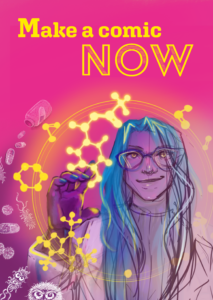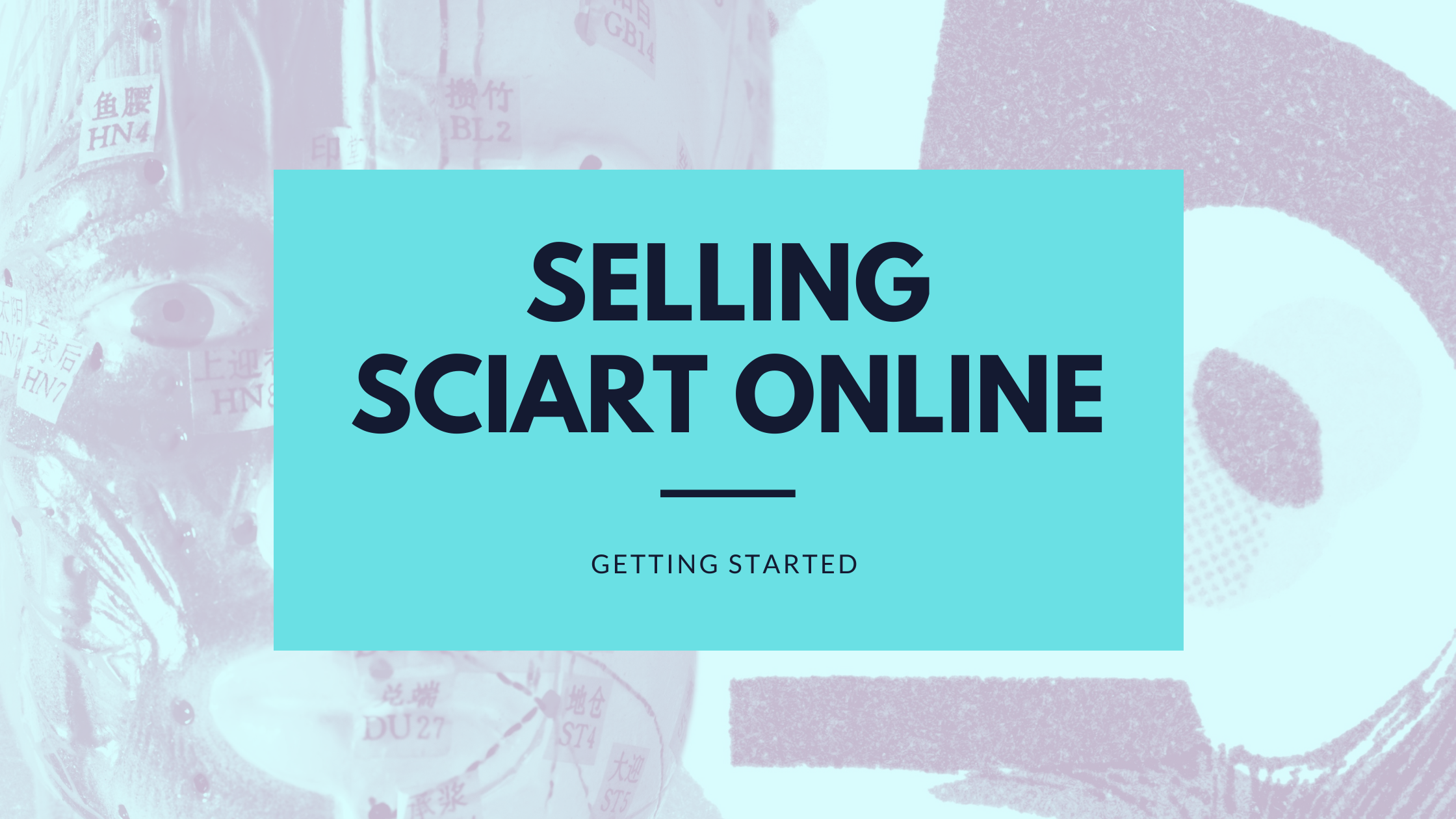‘Let’s make a Kickstarter for this massively ambitious and collaborative science communication project, how hard can it be?!’
This is what we thought 5 months ago when we had the idea to make a science anthology comic in collaboration with a group of cool science artists. Now we are partway through the Kickstarter campaign and we are still going strong!
Kickstarter is a platform where you can ask anyone to pledge money to help you ‘kickstart’ the project of your dreams. It’s a popular platform for comic artists who are looking for both funding and an audience for their pet projects. And as we know, every SciComm project needs both. Because comics are a popular project on Kickstarter, we decided to give this a go ourselves.

This idea was born when we, Lizah and Eliza, two freelance scientific illustrators, were shooting the breeze over a morning cup of coffee. We wanted to curate a thematic collection of science fiction comics made with other science illustrators, to provide a platform for talent, raise awareness of fair wages and get people interested in current scientific research. How would we ever get such a project funded or published though? Was there even a demand for such a thing?

As coffee kept us going and the day rolled on, we realised that an up-beat way of engaging comic and sci-fi lovers with antimicrobial resistance (AMR) had a lot of potential. Antibiotics help us live longer and make modern surgery and cancer treatment possible. We don’t want to go back to the pre-antibiotic era, with people dying of what we’ve come to think of as minor infections, but that’s where we’re heading. Like climate change, the sheer size of the AMR pandemic makes it easy to dismiss. What can little-old-you really do to make a difference if it’s that big? However, things are being done now, and the more people who are engaged with that, the better.

We looked at public engagement grants out there, but they were too few, too small opportunities for the size of this project, or too difficult or lengthy to access. Money wasn’t the only problem either – however well-intentioned, creating something in a vacuum doesn’t get it into the hands of anyone who might benefit from it. Making and printing is just one side of publishing. Which is when we realised Kickstarter had distribution built in from the start. You raise awareness and collect money from engaged people – you do the SciComm project – you deliver the SciComm resources to the engaged people. The trick is finding out whether you can engage enough people out there about that topic, and the best way to do that is to run a campaign. If it succeeds, your idea has legs, if it doesn’t, well, never mind!

At least that’s what we thought nearly 6 months ago! Since then, we’ve enrolled and paired another 5 science artists with 7 antimicrobial resistance research projects. We’ve all conceived, written and storyboarded 7 science comics together. We’ve mocked up concept art. Built a campaign with its own comic to introduce the ideas. Formed bonds with our collaborators and learned a lot from each other. Now we’re nearly halfway through a campaign that Kickstarter officially loves, on track to reach our funding goal, but still have a long way to go.

Running a kickstarter campaign is time consuming and nerve-wracking, but we’ve realised it’s also a SciComm activity in of itself. We have reached a lot of people on Twitter, Instagram and Kickstarter who would normally not read about antimicrobial resistance. By having this campaign they can learn more about this problem and see that scientists are committed to talking to a wider audience about their work.
Now perhaps YOU have just had a great idea for a science communication project that you think a particular group of people will get a lot out of, but perhaps it’s a bit ambitious. How will you get funding for it? Do you need to do a smaller pilot first? What sort of money is available for something like this? Is it too specific? Would anyone even want it??
A lot of science communicators have had those thoughts. They are an important part of deciding whether or not what you want to do is realistic. It’s a checkpoint that prevents you unleashing all your time and energy onto something inevitably doomed from the start. The problem is, sometimes you just really want to do it anyway…
And our advice is to go with your gut. If it says do it, just do it. Perhaps it works, perhaps it doesn’t. But putting yourself out there and showing the world the type of project you would want to do most will be an incredibly valuable experience. And maybe you’ll get funding to do the project, one way or another.

Have you become curious? Check out the campaign! You can help us make it happen by supporting us and perhaps set a new precedent for how we approach science communication!: https://www.kickstarter.com/projects/lizah/resist-now
Dr. Eliza Wolfson is a scientific illustrator and microbiologist based in Bristol, UK – her work can be found at https://lizawolfson.co.uk/
Dr. Lizah van der Aart is a Science Artist and Science Communicator based in Newcastle Upon Tyne, UK – their work can be found at https://lizahvanderaart.com/





